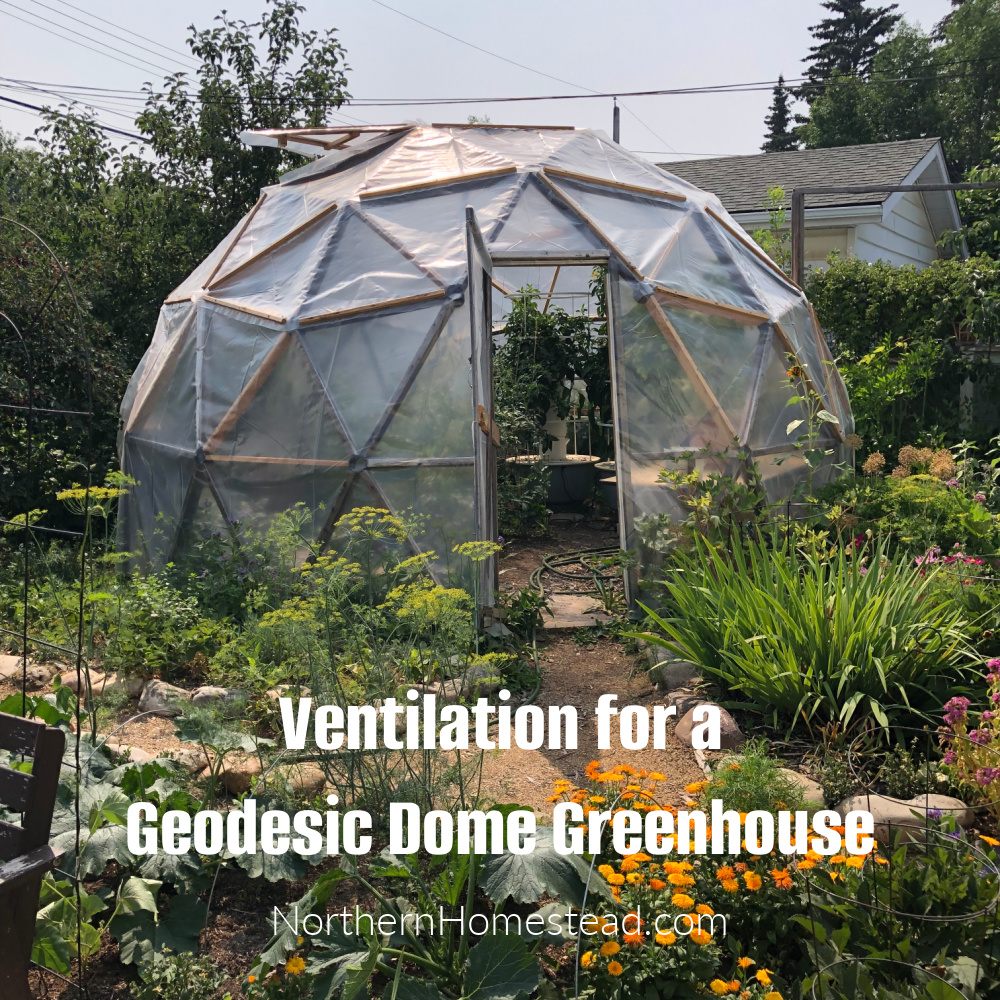
During a sunny day, a greenhouse can quickly overheat, damaging plants. Ventilation is crucial for regulating temperature. Ventilation is ‘the provision of fresh air to a room, building, etc.’ Now, let’s explore ventilation for a Geodesic Dome Greenhouse. These guidelines could be relevant to greenhouses of any shape.
Note: We are writing from the perspective of a high-elevation cold climate with cool summer nights usually below 10°C (50F).
Windows for Ventilation in Geodesic Dome Greenhouse
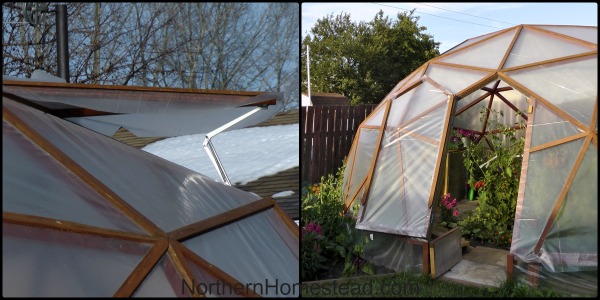
Our first geodesic dome had two windows with Automatic Greenhouse Window Opener. However, we soon noticed that two windows were not enough.
The new owner of that Geodesic Dome Greenhouse added more windows to keep the dome from overheating on hot sunny days.
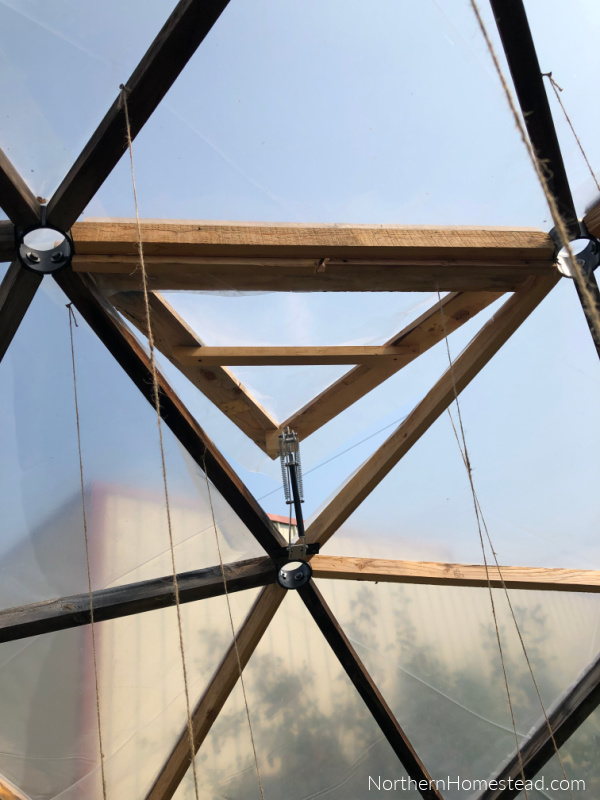
We initially built our second dome without windows for ventilation. However, after a repair, we installed two windows and added a vent opening at the bottom, as you’ll read about below. It’s crucial to have cross ventilation in the greenhouse, with fresh air entering at the lower part and hot air escaping at the top.
Just having windows isn’t enough to solve the problem of cool nights. The indoor temperature also falls when the outside temperature drops to near freezing. These fluctuations can be highly stressful for plants.
Thermal mass plus heat exchanger solution
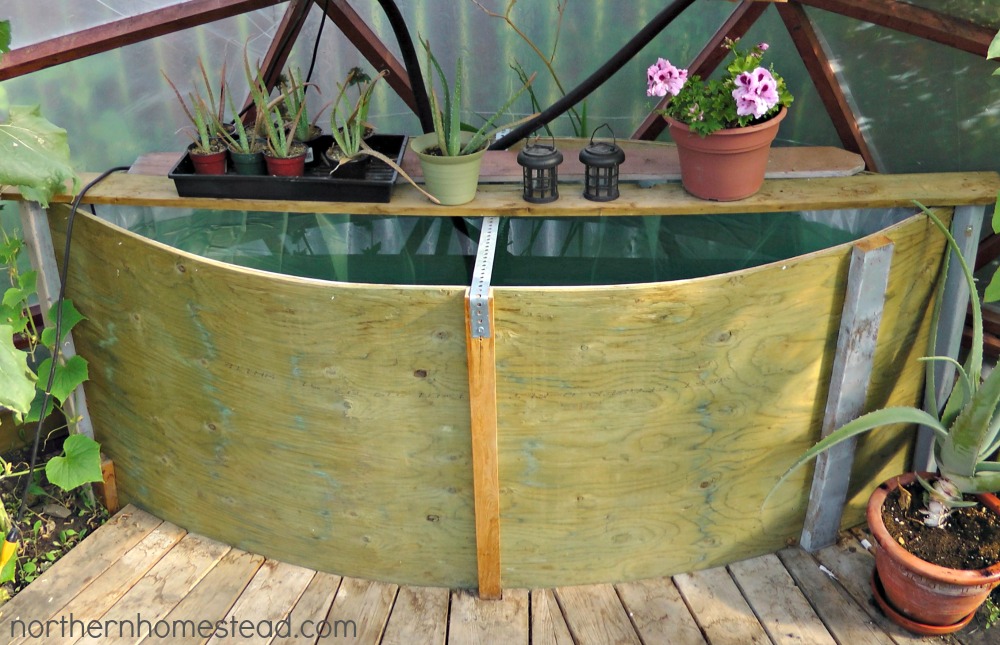
To solve the temperature fluctuation, we used a water tank for the geodesic dome greenhouse as thermal mass. Thermal mass in a greenhouse helps with temperature fluctuation, and a well-isolated building can even help some to keep it from freezing.
We needed to improve the efficiency of thermal mass and adapt it to the GeoDome. The solution we came up with can be found in this Car Radiator for Heating and Cooling a Greenhouse article.
No ventilation in a Geodesic Dome Greenhouse
Since the Car Radiator for Heating and Cooling a Greenhouse solution worked well in the first GeoDome Greenhouse, we wanted to experiment with capturing all thermal energy during the day and releasing it on demand at night. For ourselves, it was just another case study, as we haven’t read or heard about this approach anywhere else.
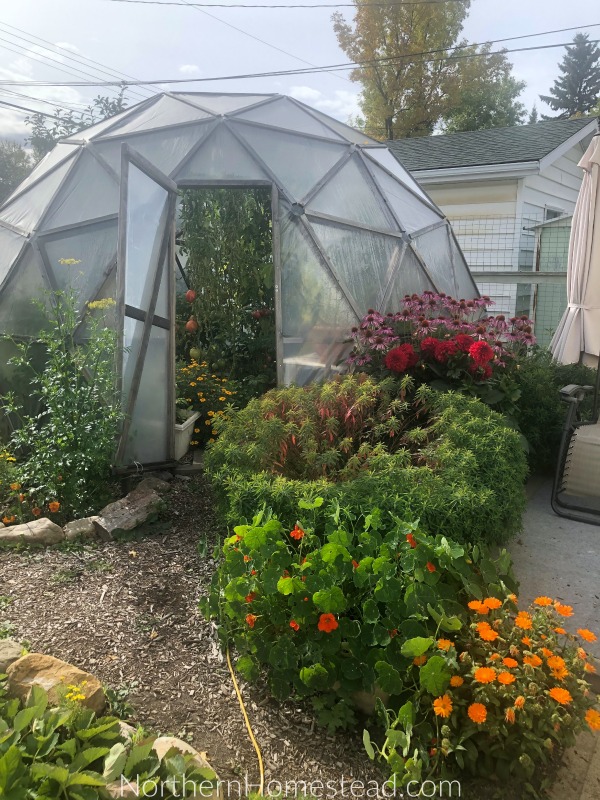
Anyway, we built our second Geodesic Dome greenhouse without any window openings. We open the door during the day, mainly for pollinators to enter and exit.
This experiment turned out to be a great solution for cold-climate greenhouses. In this video, you see the radiator in action in early spring. If you can’t see the video, go here.
With this system in place and no windows to open, we could grow tomatoes into October when the ground was already covered by snow.
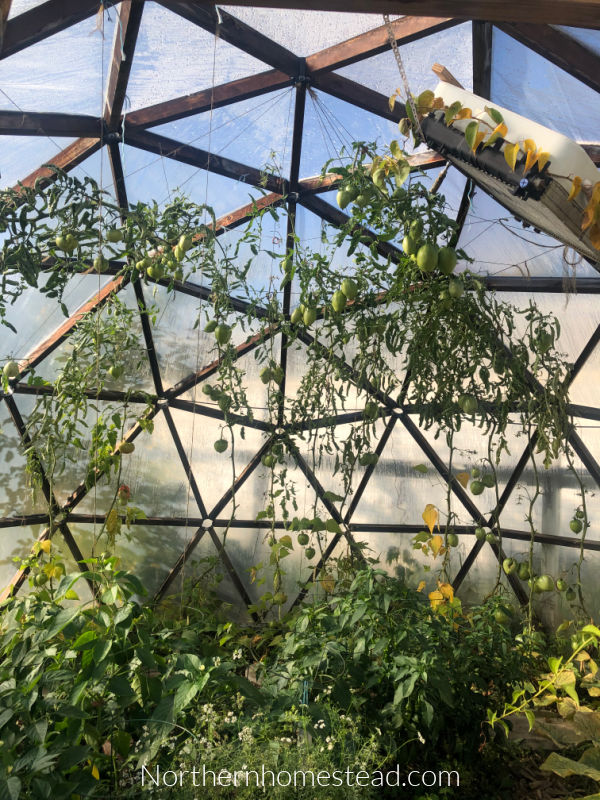
What about moisture, you might ask? That is a good question and was also our concern. Over time we realized that moisture build-up was caused more if we overplantied the greenhouse. We also had to have a fan running at all times for air movement.
We share a summer update on the greenhouse which is filled with yummy tomatoes. Capturing all the heat we get has turned out to be an excellent option for our cold climate if extending the growing season is a goal. However, it is a more costly option.
Windows plus an air blower ventilation on hot days
Our experience has shown that relying solely on windows to ensure good ventilation in a geodesic dome greenhouse on hot days is insufficient. The car radiator solution with thermal mass is great but is also more costly.
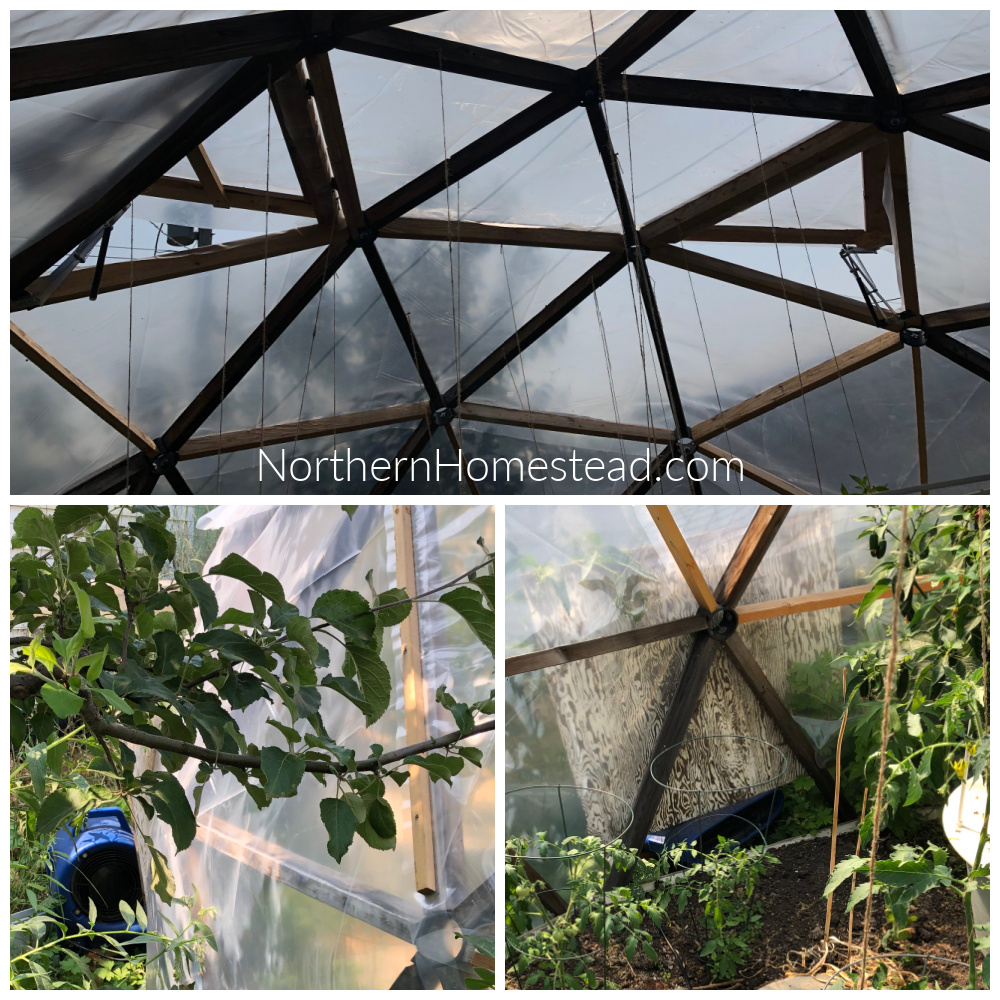
The most effective option has been to have a fan at the lower part of the greenhouse to bring in fresh air and windows at the top. The fan is only needed during hot days. The floor blower fan is positioned outside the greenhouse to blow in air through an opening.
If you have any alternative ventilation experiences in a greenhouse in a cold climate, we would love to hear about them in the comment section below.
Don’t forget to subscribe to Northern Homestead and follow us on Facebook or Pinterest for the latest updates.

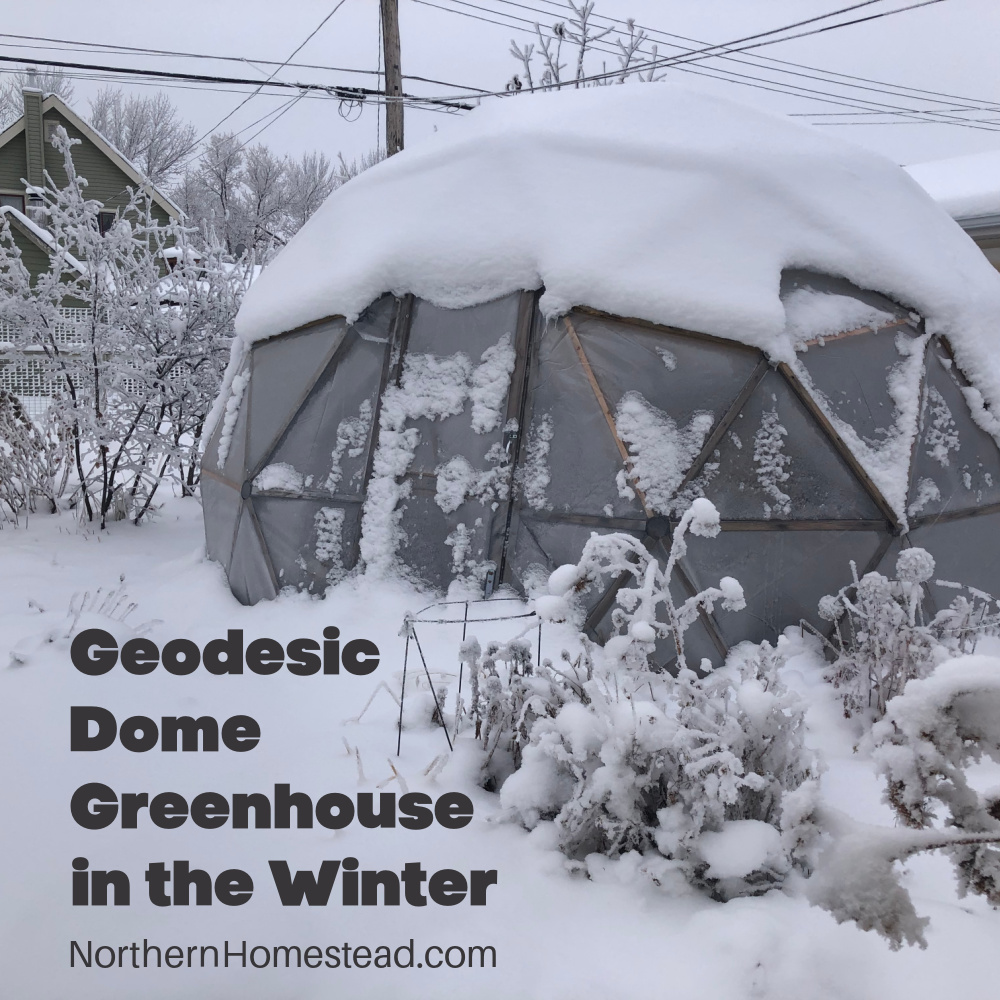
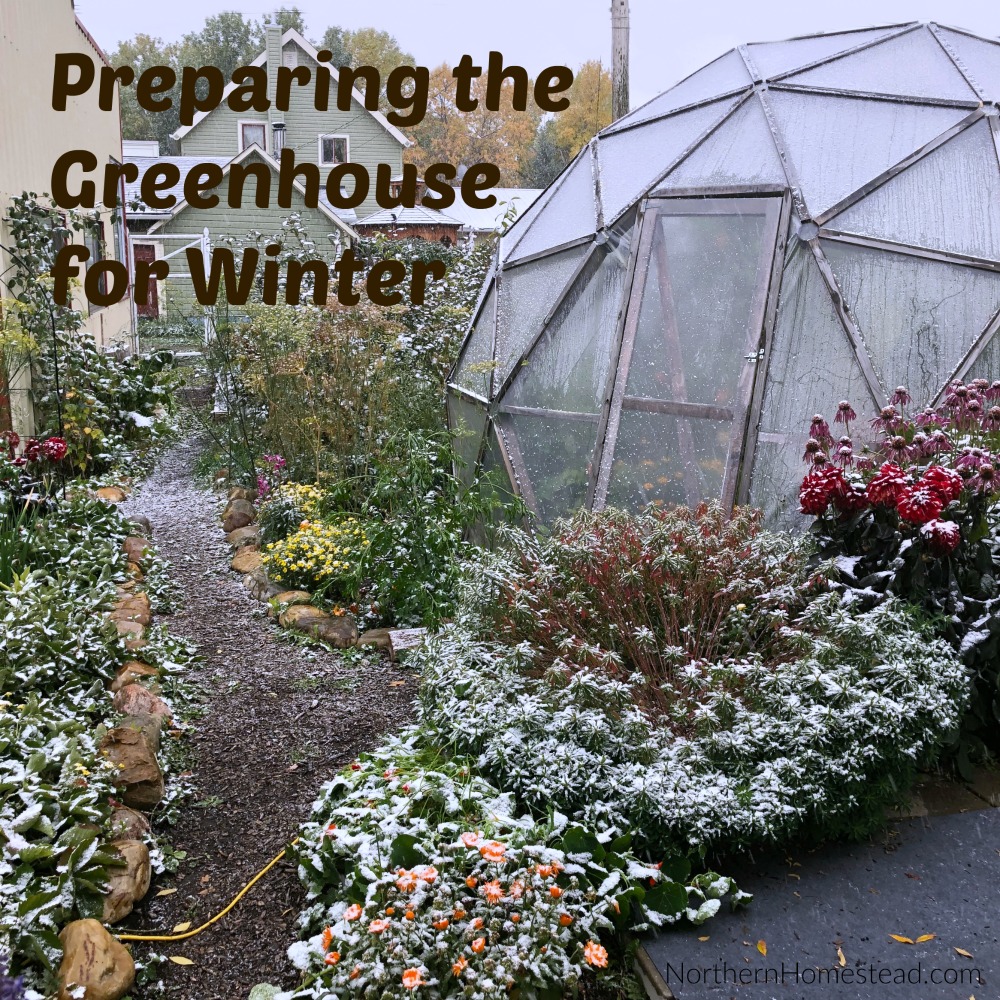
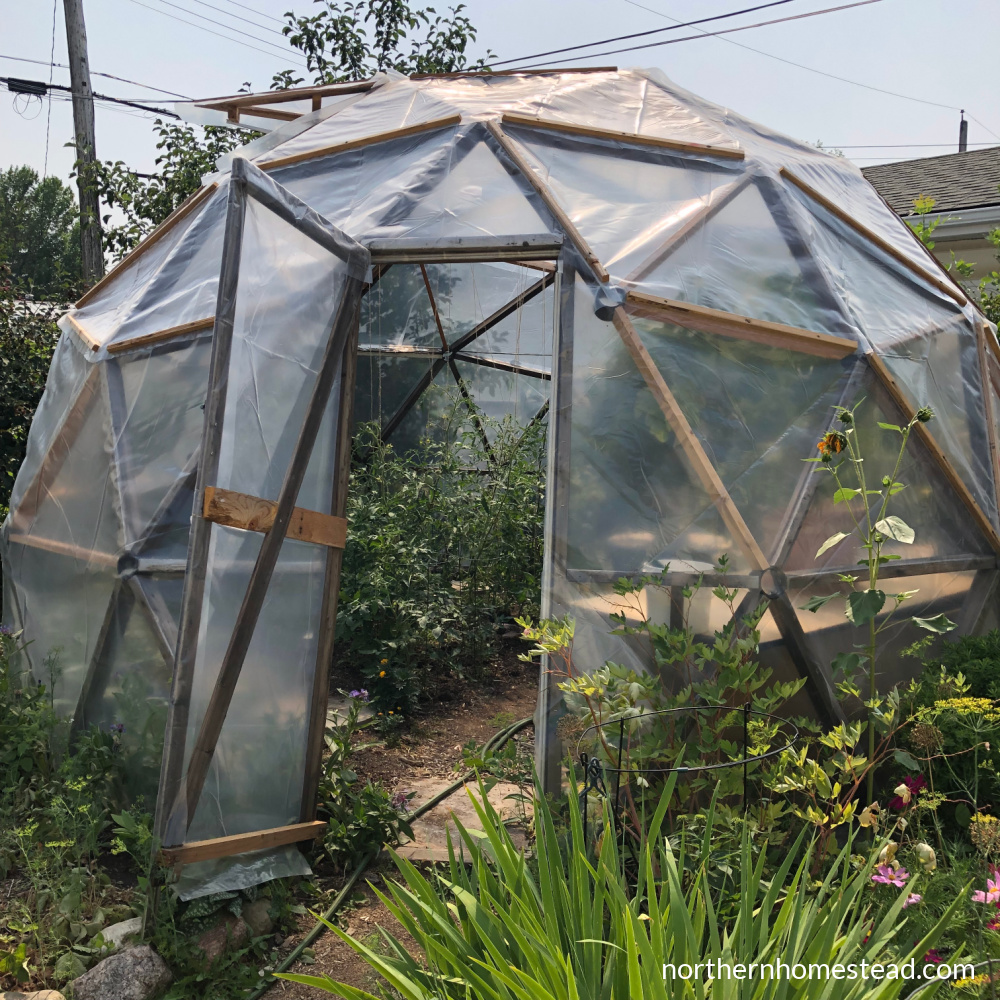
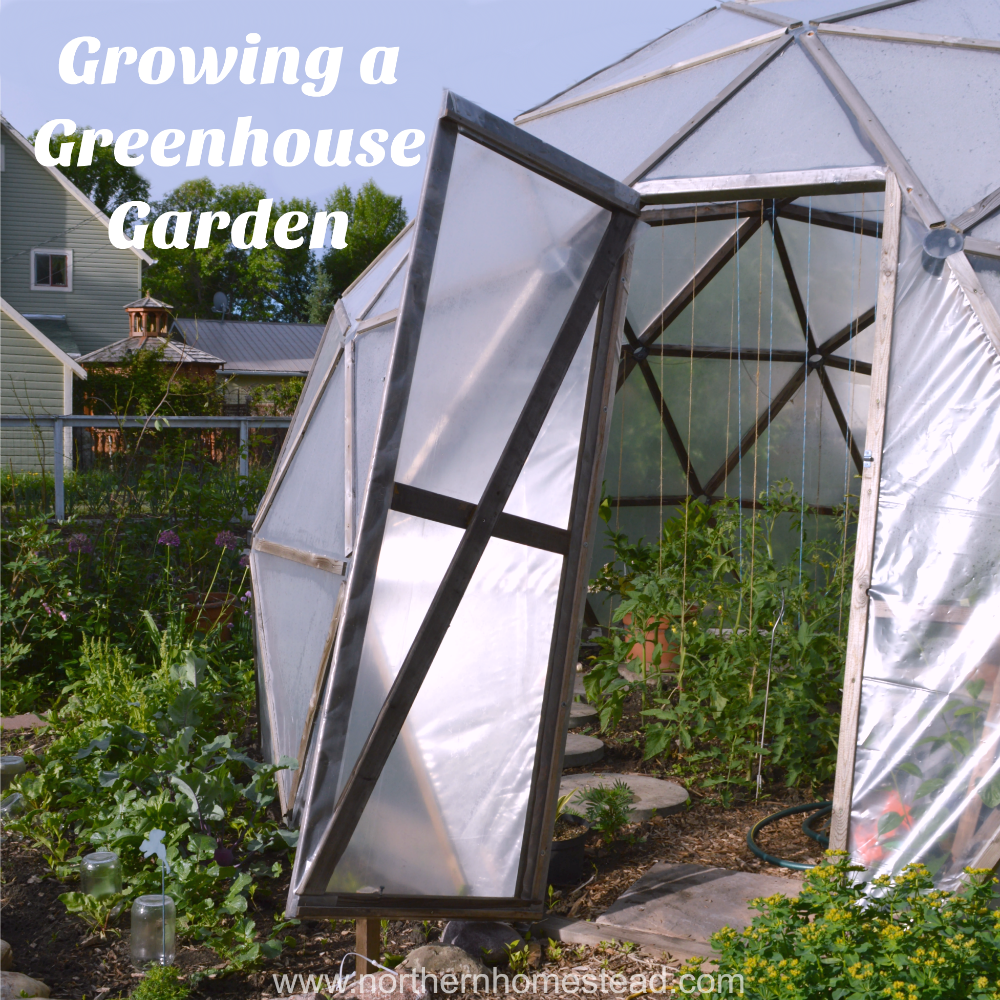
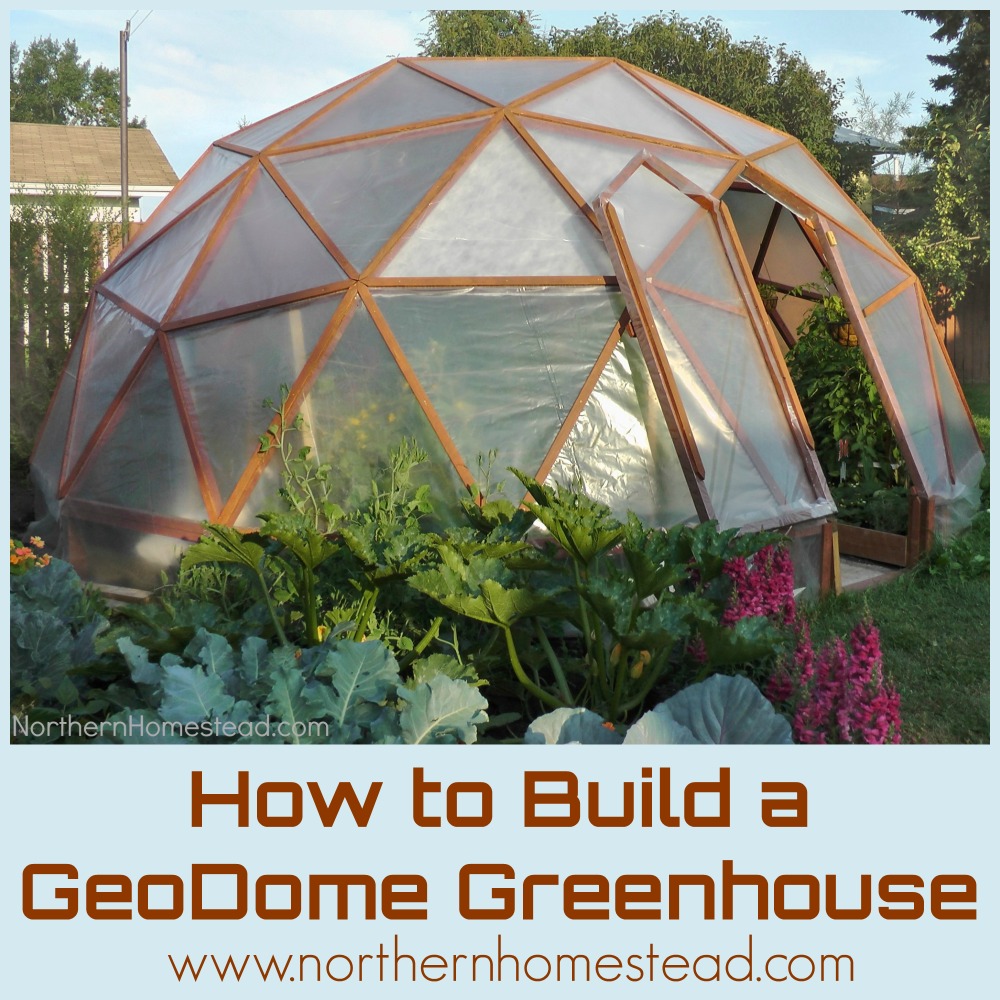

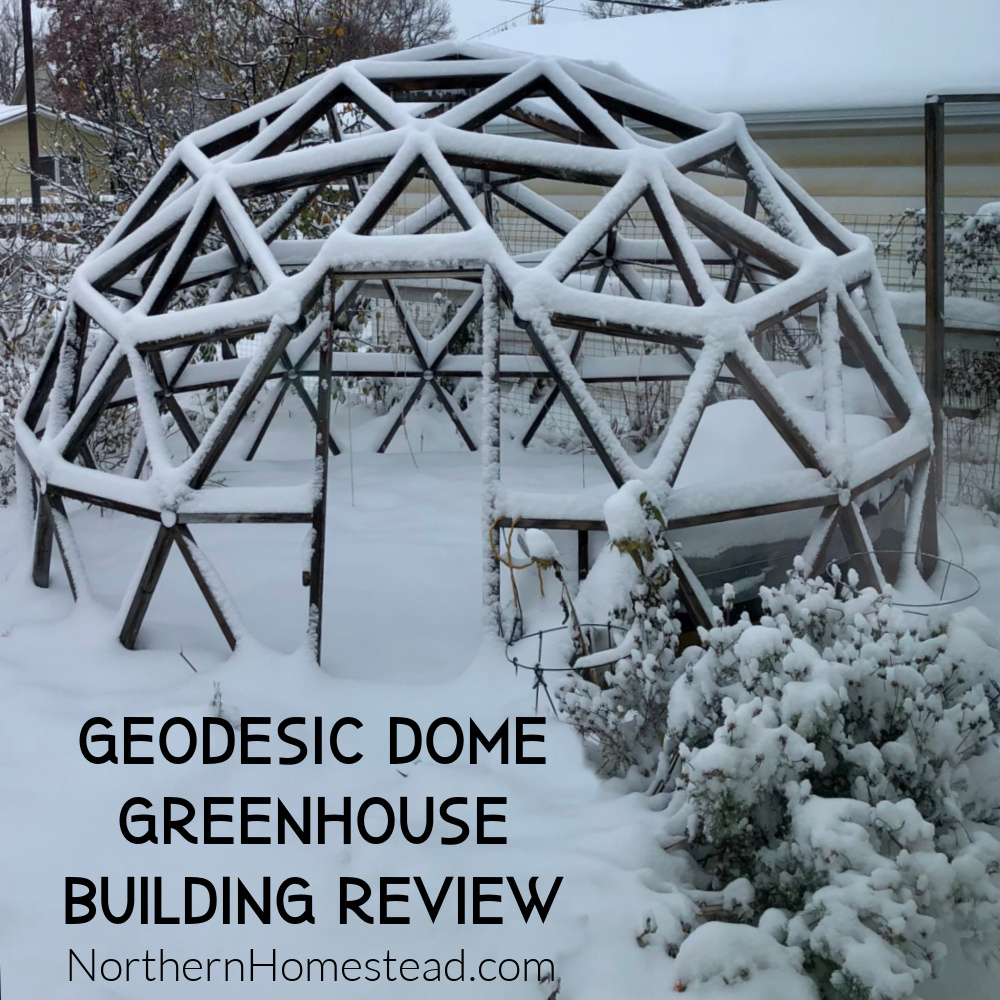
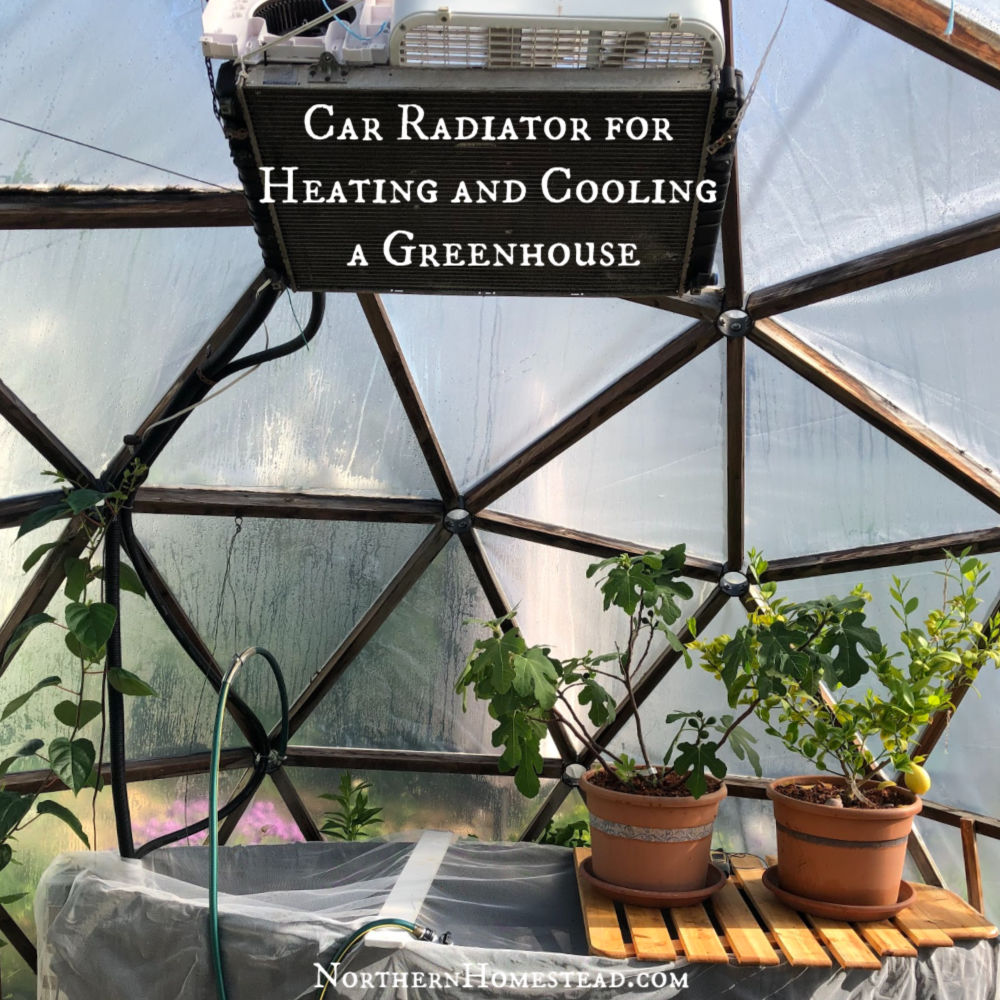
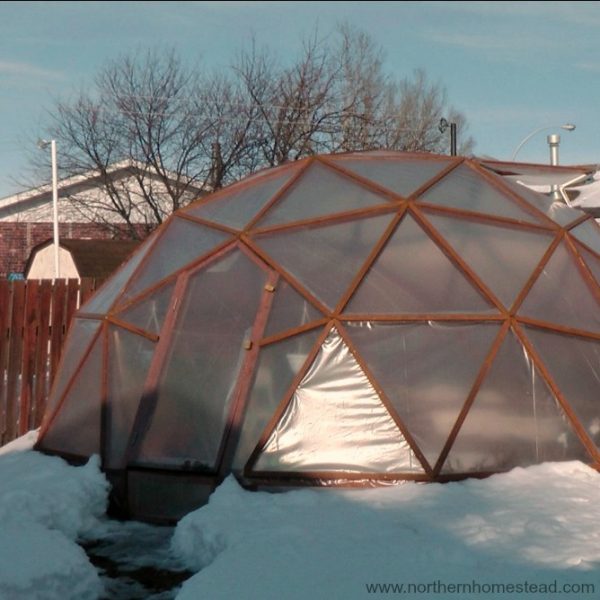

Leave a Reply